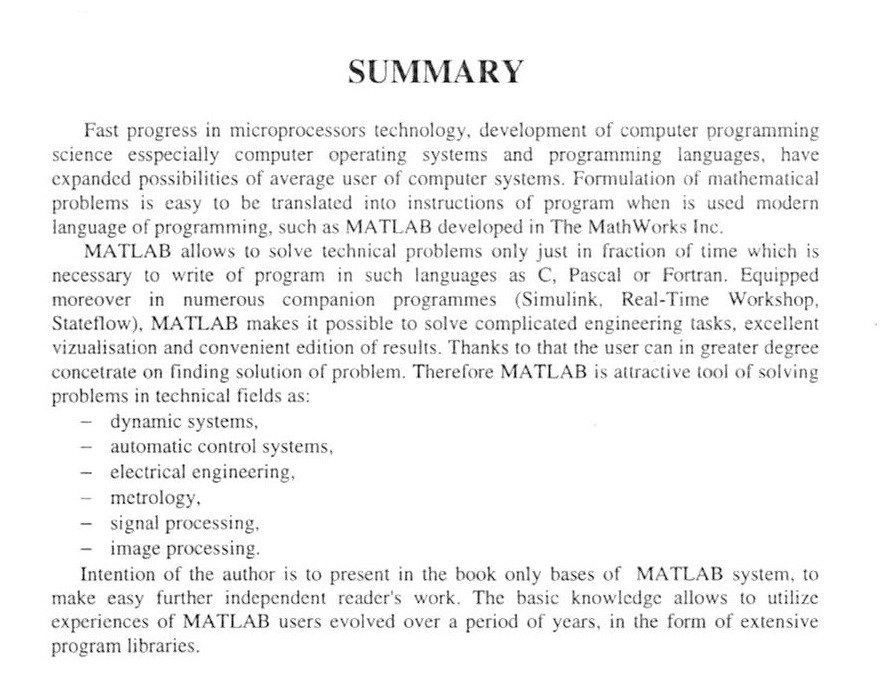Wprowadzenie do MatLab (124)

SUMMARY
Fast progress in microprocessors technology. development of Computer programming science esspecially Computer operating systems and programming languages, have cxpandcd possibilities of average user of Computer systems. Formulation of mathematical problems is easy to be translated into instructions of program whcn is uscd modern language of programming, such as MATLAB developed in The MathWorks Inc.
MATLAB allows to solve technical problems only just in fraction of time which is necessary to write of program in such languages as C, Pascal or Fortran. Equipped moreover in numerous companion programmes (Simulink. Real-Time Workshop, Stateflow), MATLAB makes it possible to solve complicated engineering tasks, excellent vizualisation and convenient edition of results. Thanks to that the user can in greater degree concetrate on Finding solution of problem. Therefore MATLAB is attractive tool of solving problems in technical ficlds as:
- dynamie systems.
- automatic control systems,
- electrical engineering.
- mctrology,
- signal processing,
- image processing.
Intention of the author is to present in the book only bases of MATLAB system, to make easy further independent rcadcr's work. The basie knowlcdgc allows to utilizc experiences of MATLAB users evolved over a period of ycars, in the form of extensive program libraries.
Wyszukiwarka
Podobne podstrony:
11388 Wprowadzenie do MatLab (29) 3 -99 0.0001 9.6397238
12271 Wprowadzenie do MatLab (2) SPIS TREŚCI PRZEDMOWA
21647 Wprowadzenie do MatLab (108) Dla naszego próbnego wielomianu, double(p) daje taki wynik&n
22326 Wprowadzenie do MatLab (26) spowoduje utworzenie i wyświetlenie odpowiedzi systemu wektora t =
Wprowadzenie do MatLab (100) Zmienna s, wykorzystywana wewnątrz funkcji w funkcji, jak również zmien
Wprowadzenie do MatLab (106) katalogu bez przedrostka Konstruktor tworzy obiekty przez zainicjowanie
więcej podobnych podstron